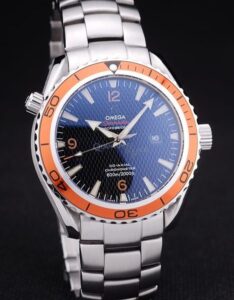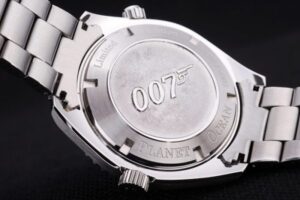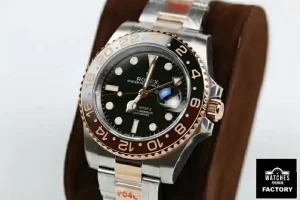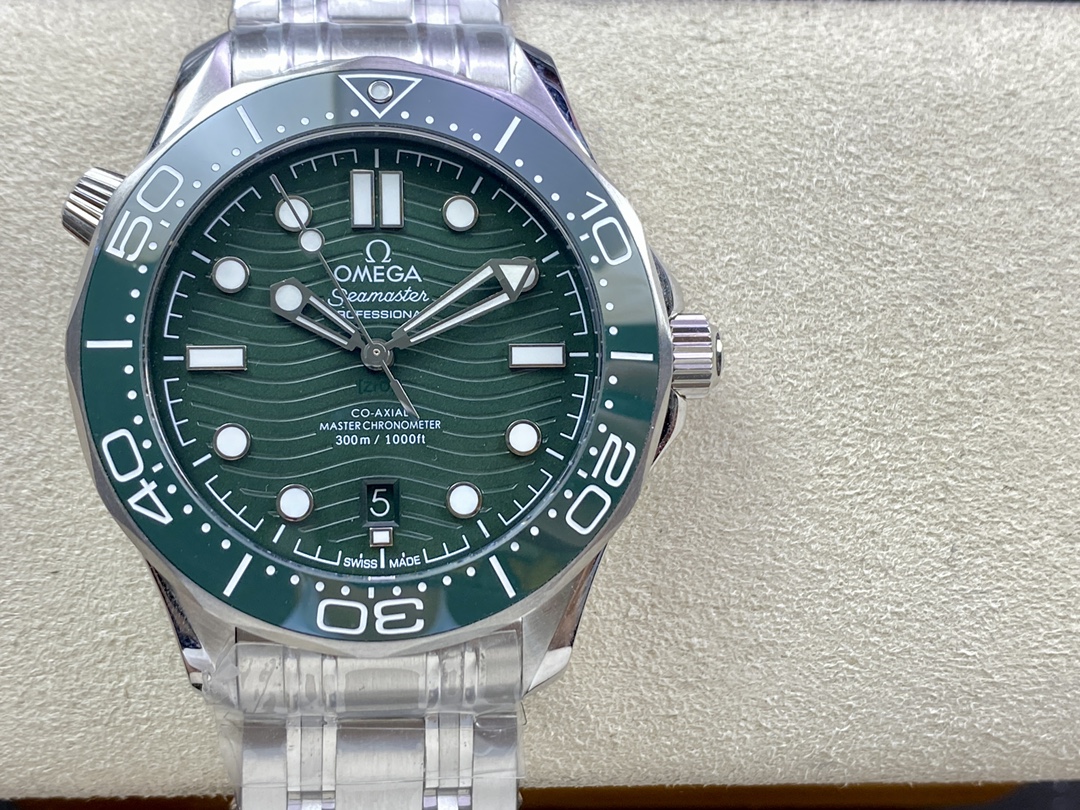This Sunday’s faceoff is not your typical watch battle – it’s an iconic showdown between two of the most beloved chronographs in the luxury watch world. We’re pitting the newly released Omega Speedmaster Professional in steel and gold against the classic two-tone replica Rolex Daytona. Robert-Jan is championing the Speedmaster, while Jorg stands firmly behind the Daytona. Both watches have deep histories, iconic designs, and a loyal fan base. But which watch will win your vote? Let’s dive into the details. 
A New Take on a Classic
Omega recently unveiled its latest versions of the Speedmaster Professional Moonwatch, featuring a mix of steel and gold. Although not the first two-tone Moonwatch, these are the first regular-production models since the 1980s to use this combination. The steel and gold editions are a nod to the past but with a modern twist, blending Omega’s cutting-edge advancements with classic design cues.
On the other hand, two-tone fake Rolex Daytonas are a staple in the Rolex lineup, with the steel and yellow gold model being a familiar and well-loved variant. The Daytona’s mix of luxury and sport is legendary, but can it hold up against Omega’s fresh release? 
The Rolex Cosmograph Daytona
Jorg is well aware of the challenge he faces. In a previous showdown, the Moonwatch emerged victorious, with 70% of the vote going to the Omega Speedmaster in stainless steel over the Daytona. Yet Jorg believes the Daytona in two-tone – especially with a black dial – has an edge in the steel and gold category.
While he acknowledges some drawbacks of the Daytona, like its busy dial and impractical screw-down pushers, Jorg argues that Rolex knows how to make two-tone watches shine. In his opinion, the Daytona in steel and gold has a seamless aesthetic, especially when paired with a black dial, making it the standout option in this match. 

A Polarizing Choice
Jorg’s key argument against the Speedmaster lies in its aesthetic adaptation. While the Moonwatch is a beloved icon in stainless steel and stunning in full gold, he feels the two-tone design doesn’t suit the Speedmaster as naturally. To Jorg, it looks as if the Speedmaster is wearing an ill-fitting jacket – the combination of steel and gold just doesn’t align with the Moonwatch’s rugged DNA.
Omega offers two versions in steel and gold: one in Sedna Gold, which features a warm, pinkish hue, and another in Moonshine Gold, a paler, yellow-toned alloy. For Jorg, neither version hits the mark. He finds the Sedna Gold too contrasting, and the lack of dial contrast in the Moonshine Gold version makes it look washed out. In the end, Jorg believes the Daytona’s cohesive design makes it the superior two-tone chronograph.
Omega Speedmaster’s Rich Heritage
In response, Robert-Jan defends Omega’s choice to release a two-tone Speedmaster. For him, the Moonwatch’s two-tone editions tap into a deeper history. He points out that clone Omega introduced a steel and gold Speedmaster in 1983, five years before Rolex adapted the Daytona to a modern automatic chronograph. This historical context, he argues, gives the Speedmaster a rightful place in the two-tone category.
Robert-Jan has spent considerable time with the new Speedmaster, favoring the steel and Moonshine Gold variant. While he initially leaned towards the Sedna Gold version, the steel and yellow gold design grew on him, especially as it delivers a subtle vintage vibe reminiscent of the 1980s.
For Robert-Jan, the new Speedmaster is all about the joy of wearing a watch that stands out yet retains Omega’s legendary build quality. He believes the updated movements, materials, and design elements make the Speedmaster Professional the go-to choice for fans of both vintage and modern horology. Unlike the Daytona, the two-tone Speedmaster doesn’t shout luxury – it whispers it. 
A Clash of Aesthetics and Heritage
This faceoff is ultimately about aesthetics and personal preference. Rolex’s steel and gold Daytona is undeniably familiar, comfortable, and iconic. It’s a watch that many gravitate towards for its recognizability and timeless design. Meanwhile, Omega’s steel and gold Speedmaster challenges tradition, offering a fresh take on a classic design that doesn’t try to mimic its Rolex counterpart.
Jorg believes the replica Rolex Daytona’s design cohesion gives it the upper hand, while Robert-Jan argues that Omega’s historical precedence and modern reinterpretation make the Speedmaster the watch to beat. Both contenders agree, however, that in the end, it all comes down to what makes you smile. So, which will it be – the enduring familiarity of the Daytona or the bold evolution of the Speedmaster? The choice is yours.
